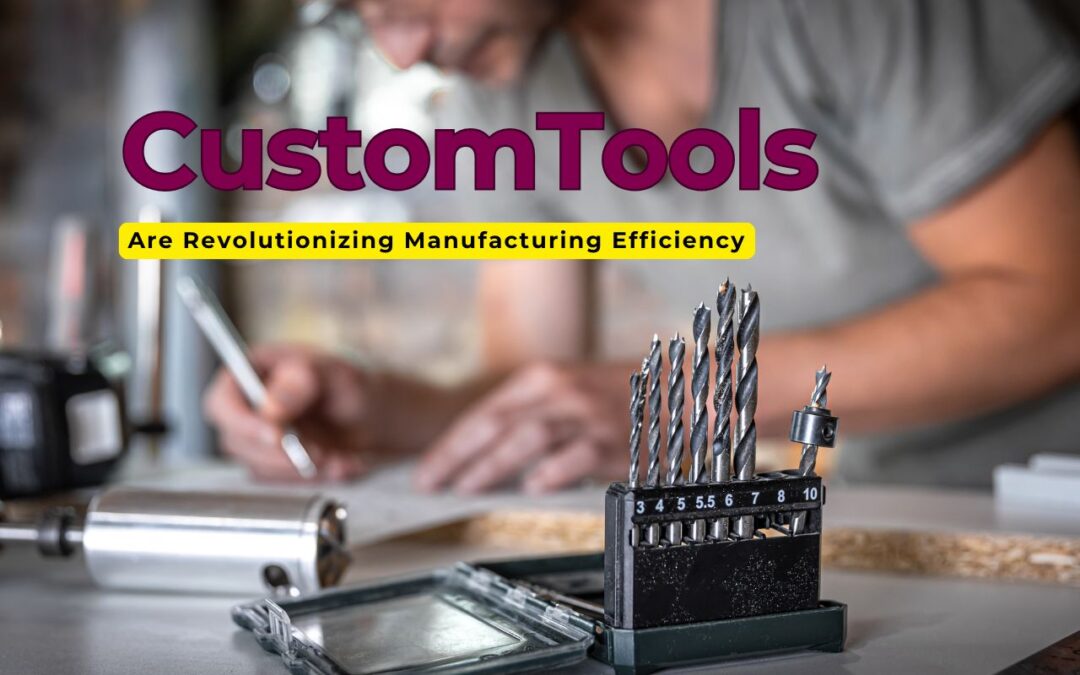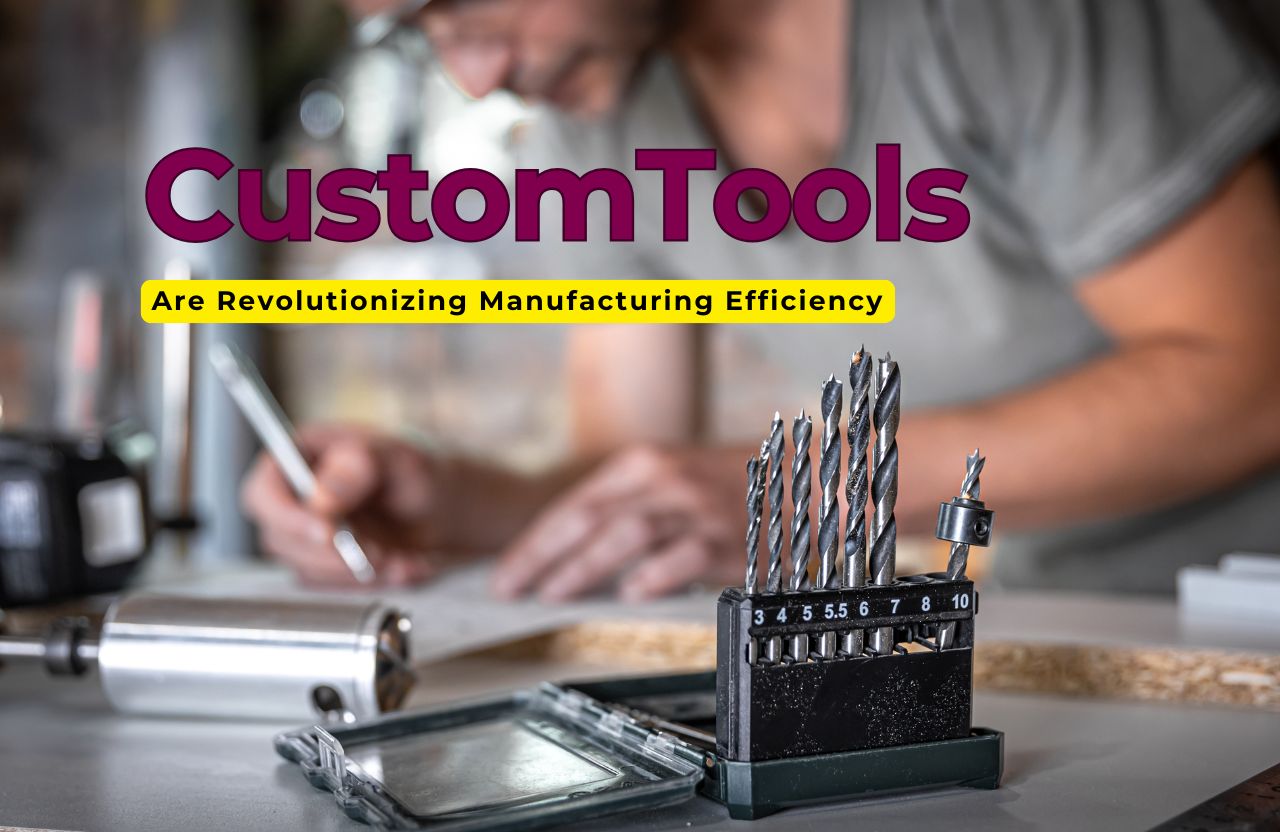In today’s fast-paced industrial world, efficiency is the currency of success. Manufacturers are under immense pressure to reduce costs, increase productivity, meet growing customer expectations, and innovate without compromising quality. To keep up with these demands, businesses are increasingly turning to custom tools—specially designed instruments tailored to unique processes, components, or environments. These tools are transforming traditional workflows and redefining the capabilities of modern manufacturing.
This blog explores how custom tools are revolutionizing manufacturing efficiency, diving deep into their benefits, the industries embracing them, how they are developed, and what the future holds for this powerful trend.
Understanding Custom Tools in Manufacturing
Custom tools are not off-the-shelf solutions. They are purpose-built for specific functions, processes, or machines, crafted to handle the unique characteristics of a manufacturing task. These tools can range from precision-cutting implements to advanced jigs and fixtures or even modular robotic arms designed to work on one particular product line.
Unlike standard tools, custom tools are created with direct input from engineers, designers, and technicians who deeply understand the task at hand. This intimate alignment with operational needs allows them to solve inefficiencies that general tools simply cannot address.
The Evolution of Manufacturing Tools
Historically, manufacturing was driven by mass production, where standardization ruled. Standard tools were easy to procure and suited for high-volume, repetitive production tasks. But with the rise of more diversified consumer demands and greater competition, manufacturers began looking for ways to stand out.
Over time, companies realized that optimizing specific stages of production could dramatically improve overall efficiency. This led to a shift away from generic tools to customized solutions that fit the exact needs of a job, machine, or component. The evolution also coincided with advancements in computer-aided design (CAD), additive manufacturing, and automation, making the creation and deployment of custom tools faster and more affordable than ever.
Key Benefits of Custom Tools in Manufacturing
1. Improved Accuracy and Precision
One of the standout benefits of custom tools is the enhanced precision they bring to operations. When tools are specifically designed for a single purpose or part, the margin of error significantly reduces. This is especially crucial in sectors where precision is non-negotiable, such as aerospace, automotive, and medical device manufacturing.
2. Increased Production Speed
Time is a major factor in manufacturing profitability. Custom tools are engineered to streamline tasks and eliminate redundant steps, cutting down cycle times and enabling faster throughput. For example, a custom fixture might allow an operator to perform multiple tasks without repositioning the part, saving precious seconds that add up over thousands of cycles.
3. Reduced Downtime
Generic tools often lead to mismatches, requiring operators to stop machines, make adjustments, or perform additional quality checks. Custom tools, by contrast, fit perfectly and work seamlessly, minimizing the risk of breakdowns and errors. This contributes to smoother workflows and reduces costly downtime.
4. Enhanced Worker Safety
Safety is paramount in any manufacturing environment. Custom tools can be designed with safety features that reduce strain, prevent injuries, and automate dangerous steps. Ergonomic tool design also improves usability, which decreases the likelihood of mistakes that can lead to accidents.
5. Adaptability to Complex Designs
As products become more complex and varied, the demand for equally sophisticated manufacturing solutions grows. Custom tools can accommodate intricate designs and non-standard components that would be impossible or inefficient to produce with generic instruments.
Industries Leading the Custom Tool Revolution
Several industries are pioneering the use of custom tools to stay ahead of the curve.
Precision Engineering
This industry, which includes sectors like electronics and instrumentation, depends heavily on micrometer-level accuracy. Custom tools enable delicate machining and assembly operations that standard tools cannot perform.
Automotive Manufacturing
The competitive automotive sector benefits immensely from tools tailored for specific vehicle models, enabling faster assembly and quality control without frequent tool changeovers.
Aerospace and Defense
These industries require extremely high levels of precision and material-specific handling. Custom tools are vital for tasks involving composite materials, unique geometries, and rigorous quality standards.
Medical Devices
In the production of surgical instruments and implantable devices, customization is key. Custom tools allow manufacturers to handle sensitive materials and meet stringent regulatory guidelines.
Consumer Electronics
With rapid innovation and miniaturization, consumer electronics demand tools that can handle small, delicate components efficiently and safely.
Custom Tool Development: From Concept to Execution
The process of developing custom tools starts long before a part is machined. It begins with a deep understanding of the problem or need at hand.
Identifying the Need
This phase involves collaboration between operators, engineers, and managers to analyze existing workflows and identify bottlenecks or inefficiencies. Data is collected from the shop floor, focusing on time-consuming tasks, frequent quality issues, or repetitive strain injuries.
Designing the Tool
Using insights gathered, engineers design a custom tool tailored to the specific task. CAD software plays a crucial role in modeling the tool in a virtual environment, allowing for simulation and testing before any physical prototype is made.
Prototyping and Testing
The first version of the tool is built—often using additive manufacturing for rapid prototyping. This prototype is tested under real-world conditions, and adjustments are made based on performance feedback.
Integration and Training
Once finalized, the tool is integrated into the workflow. Workers are trained on its usage, safety procedures, and maintenance requirements. Feedback from actual users is critical to ensure the tool functions as intended and achieves its goals.
Challenges and Considerations in Custom Tooling
While the benefits of custom tools are significant, there are challenges that manufacturers must navigate.
Upfront Costs
Designing and developing a custom tool involves upfront investment in terms of time and resources. However, this cost is usually offset by the long-term gains in efficiency and productivity.
Compatibility Issues
Custom tools must be compatible with existing machinery and processes. If not planned correctly, a new tool may require additional changes in infrastructure, which can be costly or disruptive.
Training and Adoption
Workers need time to adapt to new tools. If not properly trained, they may resist change or misuse the equipment, which can reduce its effectiveness.
Maintenance and Lifecycle
Unlike generic tools, custom solutions may not have standardized parts for repair or replacement. Manufacturers must plan for maintenance and have a backup strategy to avoid production halts.
The Role of Technology in Driving Custom Tooling
Recent technological advancements are making custom tooling more accessible and cost-effective.
Additive Manufacturing
Also known as 3D printing, this technology allows for rapid prototyping and production of complex tools that would be difficult to create using traditional methods. It also supports lightweight tool designs and material flexibility.
Computer-Aided Design and Simulation
CAD software enables precise design and pre-production testing. Simulation tools can forecast how the tool will perform under load, heat, and other real-world stresses, reducing trial-and-error development.
Automation and Robotics
Custom end-effectors and robotic attachments can be developed for specific assembly tasks, allowing robots to handle delicate or varied components that would be impossible with standard grippers or tools.
Sustainability and Efficiency Through Custom Tooling
Custom tools not only enhance productivity but also contribute to sustainable manufacturing. Efficient tools mean less material waste, reduced energy consumption, and fewer defective products. In addition, they help manufacturers meet environmental standards by optimizing resource usage and reducing emissions from rework or inefficient processes.
Future Outlook: What’s Next for Custom Tools?
The adoption of custom tools is poised to accelerate as manufacturing becomes more digitized and data-driven. Emerging technologies like artificial intelligence, digital twins, and the Industrial Internet of Things (IIoT) will further refine the design and application of custom tools.
In the future, we can expect:
- Smart tools that collect performance data and self-optimize.
- AI-generated tool designs that adapt to real-time feedback.
- On-demand tool production using cloud-based design and additive manufacturing.
- Mass customization that brings custom tools to even small-scale manufacturers.
Conclusion
The days of one-size-fits-all solutions in manufacturing are fading fast. In a world where efficiency, quality, and adaptability define success, custom tools have emerged as a critical lever for competitive advantage. They not only solve unique operational challenges but also unlock new levels of productivity, precision, and innovation.
Manufacturers that embrace this shift will be better positioned to thrive in a landscape that rewards speed, customization, and technical excellence. As industries continue to evolve, the role of custom tools will only become more central to the future of efficient, agile, and smart manufacturing.













